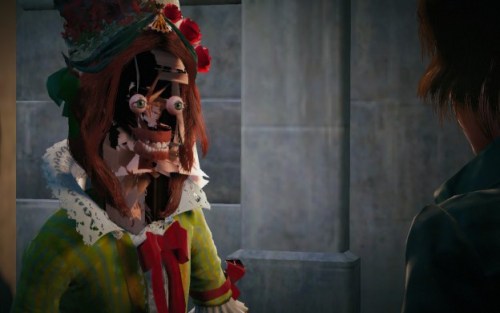Vince is kicking off 2015 by scrutinizing the blockbuster development philosophy of the AAA Games Industry on this week’s Heavy Meta!
This is my first year with a functional gaming PC, and the first where I haven’t bought, or planned to buy, any of the new consoles. A big part of why is that the offerings from the AAA industry, for any of the current consoles, just didn’t appeal to me: it seemed like companies such as Ubisoft and Activision were just churning out up-rezzed versions of the same old, same old. Another reason was price. The price of an Xbox One and PS4 are surely nothing over-the-top (compared, for example, to the PS3’s initial monstrosity of a $600 price tag), but the prices for games continue to go up.
Last generation, your typical MSRP on a game would be about 60 bucks. This generation has seen a bump up to 70. This might at first sound like the kind of complaint that I should be making from my porch, wooden switch in my hand and festering elderly racism in my gut, but I’d be willing to deal with the progressive price increase if the quality of the games increased with it. Not the quality of the textures. Not the number of cameos from Kevin Spacey. But the quality of the games. The quality of the experience overall.

This is especially glaring because, at least according to the marketing, this generation was supposed to be the one that *insert dramatic echo* ChANGED EEEEEVERYTHING. For the last couple years of the previous generation, devs whinged about how they were “hamstrung by hardware limitations” and complaining that that the PS3/360/Wii generation being the longest on record kept them from making the games they really WANTED to make. Well. They got the tools, but what we got in return was sorely lacking. Knack, an incredibly lackluster third person adventure game. Destiny; the MMO version of Halo, with all the grinding of Borderlands 2 but with none of the character, humor, or emotional depth. Assassin’s Creed: Unity, the game where you play a French revolutionary and sometimes ghost, passing halfway through walls, the ground, and occasionally transforming into a horribly nightmarish creature comprised only of eyeballs, teeth, and the blood of over-rushed production teams. Also, despite how devs were supposedly freed from the bondage of inferior tech, most of the new games coming out on the PS4 are just ports of previous-gen games. These are all complaints that you can find on any gaming message board (albeit with fewer spelling and grammar mistakes): the more important question is WHY? Why the mediocrity? Why the stagnation? These studios have the kind of production budgets that indie developers would sacrifice goats to have, together with the tech they so desperately craved.
Turns out that may very well be the problem.
Feeding the Machine

Unfortunately, cash doesn’t materialize out of thin air, and money for game production has to be provided by willing investors. While this is the same for indie teams as it is for publishing houses like Activision, the primary difference is that with indie games, the ones holding the purse strings are also the ones making the game. They care about pursuing quality and the evocation of a powerful experience in and of itself, rather than as a means to the end of acquiring more capital. That isn’t to say that you can’t have both artistic and financial success. Some of the more popular and beloved developers (guys like Valve and Double Fine) succeed financially largely because they continue to hold the quality of their craft as an equal priority to their sales numbers. I’ve referenced Ed Catmull’s Creativity, Inc. multiple times on Heavy Meta, but it bears repeating that the Disney/Pixar Animation President ascribes a great deal of Pixar’s success as a studio to the same uncompromising commitment to being ambitious and focusing on creating lasting experiences for those watching their films. Wealth in service of craft is not necessarily a bad thing, and the relationship between the two can even be beneficial for both, so long as they’re treated as equal partners.
The problem as I see it with the state of the AAA industry is that with the increase in gaming’s popularity, more business-folk began looking to game production primarily as a source of capital. As a result, more and more cash came funneling into development companies, but (importantly) it was money from people who may not play games, don’t know about games, and may not even LIKE games. As more control is put into the hands of such people (and those in their employ), the primary objective switches from making quality experiences, to getting a return on investment. The former may still arise, but only as a happy accident of pursuing the most financially successful product possible.
As a result, we get shorter and shorter development cycles as creators are pushed to create yearly installments (and sometimes multiple games in a year like Assassin’s Creed) for their franchises. Quality assurance, game testing, and any revision or refinement of the game deemed extraneous or unnecessary are shaved down in the interests of saving money and time. Creating more, faster, and cheaper. Game creation becomes fast-food.
Except that it’s not cheaper. In addition to the price hike I mentioned in the intro, game dev budgets have ballooned in the past decade. When I look at a game like Bioshock Infinite, which sold over 70 million units and yet was still considered a financial failure, I have to wonder if games becoming bigger and bigger productions is more a hindrance than a benefit. Together with the concern that commerce may take over the directing of art, there’s also the question of where all of this money is going, and if its really needed in order to make a great game.

The sheer amount of manpower it takes to create such hyper-detailed environments (as well as animate them) leads me to believe that graphical fidelity is where a lot of AAA budgets is sunk.
There seems to be this mindset that players of games like Magic the Gathering may recognize as a form of “power creep”, where the developers feel the need to constantly outdo themselves by making something bigger and better with every iteration. I think a source of this desire to turn the gaming experience into as bombastic and huge a production as possible is one leached from Hollywood. The games industry has become increasingly more cinematic recently, trying perhaps to copy techniques from film in order to gain similar legitimacy as an art form. Thing is, games don’t necessarily need to be BIGGER in order to be BETTER. The indy market in particular has shown us that with strong fundamentals in gameplay and story cohesion, you can make an endlessly addictive and beloved games without having hyper-realistic graphics and celebrity likenesses. The Game of the Year last year was Journey, a game without the inclusion of upper appendages let alone having the latest in digital eyelash rendering. But since, as I mentioned earlier, the big-budget production of games is more often being directed by those without expertise or passion for game design, this reality is entirely overlooked. A businessman sees what one profitable industry or property is doing well, and seeks to copy the success by copying the formula in a way that lacks the essential qualities that the original had. This is observable in movies, television, and books as well as it is in games.
Less Is More
I’m going to make a bold statement and say that graphics as they currently exist could stay exactly as they are for the next ten years, and the quality of games would not suffer in any way, shape, or form for it. In fact, with additional time and resources to spend on gameplay design, quality assurance, and game testing, they might very well improve. In addition, with the amount of money saved on developing and rendering needlessly more advanced graphics, there would be less pressure on developers to recoup the colossal amounts of money initially invested. This would both give creators more freedom to make a quality game without marketers and bean-counters looking over their shoulders discussing demographics and market-share, and allow them to make more bold innovations without worrying about justifying to the boardroom how their mechanic could benefit the company’s bottom-line.
Better, cheaper, more innovative games. Isn’t that what we all want?
Vince Smith is a writer, podcast host, and dyed-in-the-wool geek of all trades. You can check out other articles and videos by him over at The Rogues’ Gallery, or drop by his Facebook Page, Vincent Smith: Writer, Scholar, Gentleman for other musings from the catacombs of the Internet.
-Written by Vincent Mendoza



